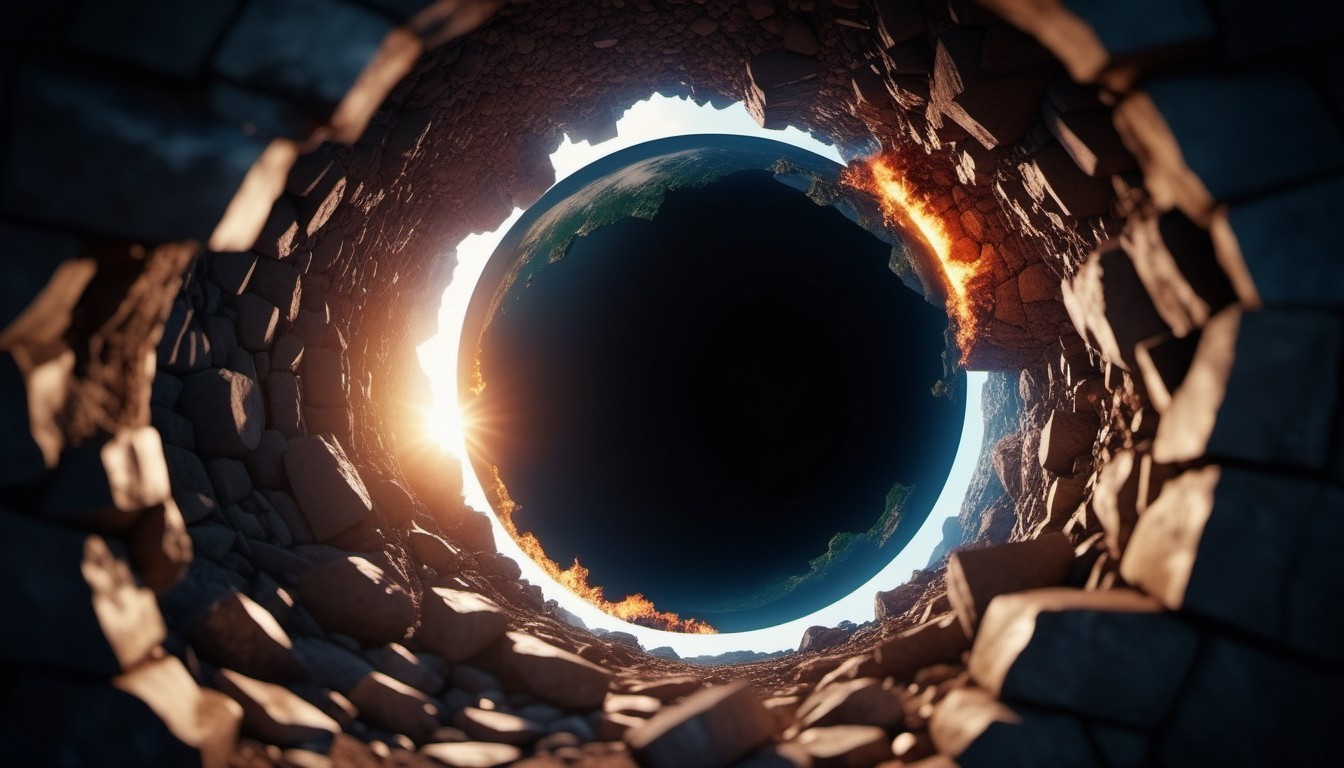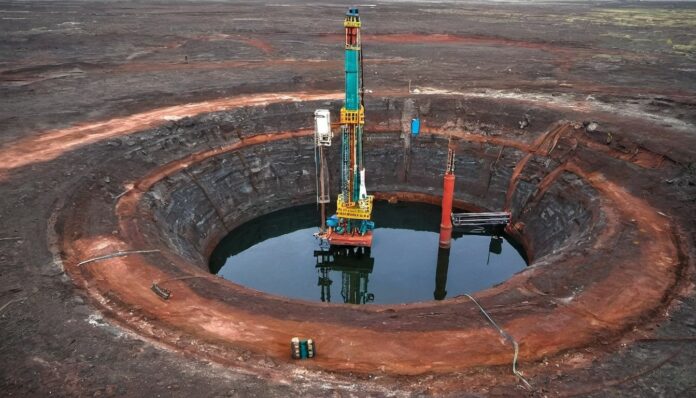Among the vast expanses of the picturesque tundra, crystal-clear lakes, fast-flowing rivers, and magical northern lights, there are forgotten mysterious ruins that evoke a strange chill in the soul with their appearance.
This is not the creation of aliens or the set of a science fiction movie—this is a lost former scientific research center in the Russian Arctic, built by humans during the Soviet era.
The Gateway to the Center of the Earth
Inside the dilapidated building, among the debris, rebar, and stones, there quietly sits an old, heavy metal hatch embedded in the ground and secured with large rusty bolts. Everyone who has seen it believes it to be the “gateway to hell” or the “road to the underworld.” Local residents avoid this mystical place, and its history holds many legends.
The chronology of the emergence of these enigmatic ruins takes us back to the distant year of 1970 when, at the direction of Nikita Khrushchev, construction began on a drilling station on the Kola Peninsula. The main goal of this massive undertaking was to drill a borehole to the center of the Earth, reaching a depth of 7 kilometers. Naturally, the question arises—why is such deep penetration into the Earth’s crust necessary? There are two answers to this question:
1. Political competition during the Cold War.
2. Scientific deep-earth and mantle research.
Perhaps there are other answers, but unfortunately, the events of those times often remained classified as “Top Secret,” many of which are still undisclosed or have been destroyed.
The Omnipresent Americans
The first to reach the deep depths of the Earth’s interior were the eternal rivals of the Soviet Union—the Americans. In the late 1950s, a society of scientists, analyzing all possibilities, decided to begin drilling at the deepest point of the Pacific Ocean near the Mexican island.
They calculated that the Earth’s crust was thinnest at this location and that reaching the “Moho boundary” would be quite achievable. But none of the scientists suspected that the technologies of those times were not yet ready for such decisive actions. They invented various drilling methods and reached a depth of 7.5 kilometers. Today, their discoveries are used in the oil and gas industries in all countries.
Soviet Union
The Soviet Union couldn’t remain indifferent to America’s achievements. Our country had to excel in everything—space flights, scientific discoveries, high technologies, and engineering capabilities.
And so, to coincide with the 100th anniversary of the leader of the revolution, V.I. Lenin, drilling of the Kola Superdeep Borehole began in the Murmansk region, not far from the lake with the astonishing name Vilgiskoddeoayvinyarvi.
Interesting Facts about the Kola Superdeep Borehole
1. Deep penetrations into the Earth’s crust held incredibly high value for scientists worldwide. It could be compared to journeys to other planets in the universe or adventures from Jules Verne’s “Journey to the Center of the Earth.” Man delved into the unexplored, unpredictable, and mysterious.
2. Drilling of the Kola Borehole lasted for over 20 years. From 1979 to 1990, the deepest hole on the planet was created, reaching a depth of 12,262 meters over these years and entered into the Guinness Book of World Records.
3. All discoveries were so amazing that they changed many previous perceptions about the Earth, and samples of rocks collected from the depths were as valuable as those brought back by American astronauts from the Moon.
4. Drilling of the unique borehole was finally halted in 1992 when the drill simply burned out due to the extreme temperature of the earth’s layers, reaching 180 degrees Celsius. The equipment was not designed to withstand such heat, and further research became impossible. Additionally, with the collapse of the Soviet Union, funding ceased, and the phenomenal project, by all world standards, was closed forever.
5. Russian scientists still debate the true reason for closing the Kola Borehole. There are rumors that when special instruments were lowered into the hole to measure the incredibly high temperature, microphones started emitting eerie sounds reminiscent of the wild cries of people. It is said that these recordings remain with the researchers, who claim they are the “screams of sinners in hell.”
6. After reaching a depth of 10 kilometers, mysterious accidents and malfunctions with the drill began. Twice it was brought up completely melted, although the temperature at the bottom was perfectly permissible, and the drill could withstand even higher heat. On one occasion, the cable lowering the equipment was simply pulled down and severed, greatly alarming the drillers. Later, when drilling in the same spot, the remnants of the cable were never found.
7. In the 1970s, lunar soil was brought from a Soviet space station. And then a real sensation occurred—scientists discovered that the lunar soil was completely identical to samples of Earth soil brought up from a depth of 3 kilometers in the Kola Borehole. This led scientists to hypothesize that millions of years ago, the Moon was part of the Kola Peninsula.
8. Journalists from foreign countries called the Soviet borehole the “well to hell.” They claimed that the collapse of the USSR occurred precisely because of deep drilling into the Earth. With each kilometer of descent, the country faced tragedies and disasters, and when the mark reached the thirteenth kilometer, the Soviet Union ceased to exist.
